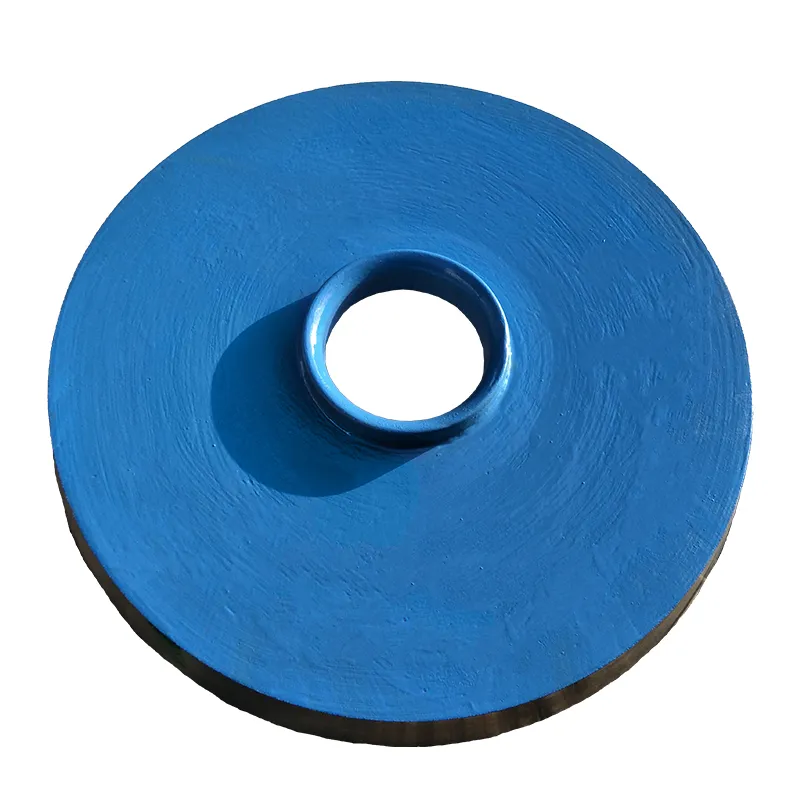-
 support@minemaxx.com
support@minemaxx.com
-
 0086-311-87833311
0086-311-87833311
 NO.8 JIHENG STREET,QIAOXI DISTRICT,SHIJIAZHUANG,HEBEI,CHINA
NO.8 JIHENG STREET,QIAOXI DISTRICT,SHIJIAZHUANG,HEBEI,CHINA
Comparison of Volute and Diffuser Casings in Pump Performance and Efficiency
Volute vs. Diffuser Casing An In-Depth Comparison
When it comes to the design of centrifugal pumps and turbines, the choice of casing can significantly affect performance, efficiency, and suitability for specific applications. Among the various casing types, volute and diffuser casings stand out as the two most prevalent options. Each has its advantages and disadvantages, making the selection process critical for engineers and designers. In this article, we will explore the fundamental differences between volute and diffuser casings, their operating principles, and their respective applications.
Understanding the Basics
Volute Casing
A volute casing is a spiral-shaped casing designed to guide the fluid flow from the impeller to the discharge outlet. This design creates a gradual expansion of the flow area, allowing the kinetic energy imparted by the impeller to convert into pressure energy. The volute's unique shape assists in minimizing energy losses associated with flow separation, which can be detrimental in centrifugal pumps.
Diffuser Casing
On the other hand, diffuser casings employ a series of stationary vanes or blades positioned around the impeller. These vanes are intended to decelerate the fluid as it exits the impeller, thereby converting kinetic energy into pressure energy more effectively. The flow in a diffuser is more evenly distributed, which can lead to improved overall efficiency and reduced turbulence.
Performance Comparison
Efficiency
One of the primary considerations when evaluating casing types is efficiency. While volute casings are typically easier and less expensive to manufacture, they may not always operate at peak efficiency, particularly under varying flow conditions. The gradual expansion of the volute helps maintain efficiency, but the flow can exhibit non-uniform behavior, leading to potential energy losses.
In contrast, diffuser casings are often preferred for high-efficiency applications. The stationary vanes facilitate a more controlled flow, reducing turbulence and energy losses. This design also allows for better performance at off-design conditions, making diffusers a popular choice for applications requiring a wide range of operating conditions.
volute vs diffuser casing

Pressure Recovery
Pressure recovery refers to the ability of the casing to convert kinetic energy into pressure. Volute casings generally provide good pressure recovery, but their performance can diminish at lower flow rates. Diffuser casings tend to excel in this regard, showcasing improved pressure recovery across a broader range of flow conditions. The streamlined flow path provided by the vanes in a diffuser minimizes pressure loss, enhancing overall system efficiency.
NPSH Requirements
Net Positive Suction Head (NPSH) is another crucial factor when selecting between volute and diffuser casings. Volute casings can sometimes exhibit higher NPSH requirements, which may lead to cavitation issues in low-NPSH applications. Conversely, diffuser casings generally offer lower NPSH requirements, making them ideal for systems where cavitation is a concern.
Applications
Volute Casing Applications
Volute casings are widely used in various applications due to their simplicity and cost-effectiveness. They are common in municipal water supply systems, irrigation, heating systems, and aquaculture operations. Due to their lower manufacturing costs and relatively straightforward design, volute casings can be effective in applications where efficiency is not the primary concern.
Diffuser Casing Applications
Diffuser casings find their niche in applications requiring high efficiency and performance stability. These include power generation, chemical processing, and in systems that operate under varying loads. Due to their enhanced pressure recovery and smoother flow characteristics, diffusers are often selected for applications where even minor efficiency improvements can lead to significant economic benefits.
Conclusion
In conclusion, the choice between volute and diffuser casings ultimately depends on the specific requirements of the application. For general use, particularly in simpler systems, volute casings offer affordability and ease of maintenance. However, in scenarios where efficiency, pressure recovery, and operational stability are paramount, diffuser casings present a clear advantage. Understanding the intricacies of each design is essential for engineers and designers to make informed decisions that align with their operational goals and needs. Whether choosing a volute or a diffuser, each casing type plays a vital role in the effective transportation of fluids in countless industrial applications.
-
Wet Parts for Optimal PerformanceNewsOct.10,2024
-
Vertical Pump Centrifugal SolutionsNewsOct.10,2024
-
Top Slurry Pump ManufacturersNewsOct.10,2024
-
The Ultimate Guide to Centrifugal Pump for SlurryNewsOct.10,2024
-
Pump Bearing Types for Optimal PerformanceNewsOct.10,2024
-
A Guide to Top Slurry Pump SuppliersNewsOct.10,2024
-
Slurry Pump Parts for Optimal PerformanceNewsSep.25,2024

